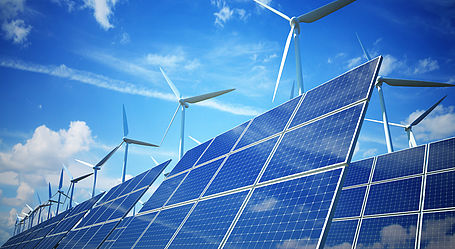 Photo Credit: Desmond1234/Wikipedia Commons
Photo Credit: Desmond1234/Wikipedia Commons
The Potential of International Climate Finance
International climate finance can be both a response to the existential threat of climate change and a key method of competing with China. Both issues stand out among the many areas of heightened concern for the Biden administration and Congress. Although Secretary Kerry confirmed that China and the US will cooperate on some aspects of climate change, there will also be many opportunities to compete through climate change-related foreign policy. International climate finance in particular should be at the center of American strategy abroad, yet as evident from last week’s congressional hearing and despite a robust plan by the Biden administration, its potential role has yet to be realized.
Countries are moving forward to sustain their pledges to reduce emissions. States require new technology, new infrastructure, and, above all, financing. America’s capacity to do so is evident. The Treasury Department aims to mobilize $100 billion annually to support mitigation in developing countries and will work to align Multilateral Development Banks with climate goals. The State Department and USAID are mobilizing private capital, working with partner states, and pipelining crucial projects. The Development Finance Corporation (DFC) is now positioned as a dynamic, nimble foreign policy arm of the United States, with goals to have a 33% climate focused portfolio by 2023 and a net zero portfolio by 2040.
International climate finance has enormous potential, not only to influence the selection of renewable energy sources and develop positive relationships, but to offer alternatives to Chinese finance that may come with pressure in other areas. The purpose, and effects, of the Belt and Road Initiative are well known. International climate finance can meet that challenge head on. America should be taking every opportunity to be the partner of choice by de-risking investments, attracting private capital, and offering incentives for renewable energy through debt relief, particularly in the Indo-Pacific. Global concerns, and private capital, are already moving towards climate related issues. The recent G7 communiqué pledging to end financing of coal projects by 2021 indicates this is the direction international finance is heading. The United States must be deliberate about how it goes about it. Aligning US government capacity and initiative has a direct impact on our ability to compete with China.
The globe is at the precipice of a world-wide infrastructure revolution; it is inevitable that it will be part of US-China competition. International climate finance creates renewable energy partnerships for long-term infrastructure projects, which promotes our values and leadership abroad. More tangibly, many of the DOD’s contingency plans rely on regional access. US foreign policy should be focused on securing that access. International climate finance can also help create markets for American businesses and climate innovation.
The Biden administration has made international climate finance a priority at the Departments of Treasury and State, at USAID, and at the DFC. The progress they make will be important for the global fight against climate change, but it should also be part of a broader US national security strategy to increase US influence and improve America’s standing abroad. Congressional funding and support should proceed with that in mind.
Photo: Wind and Solar Energy. Desmond1234, CC BY-SA 4.0 <https://creativecommons.org/licenses/by-sa/4.0>, via Wikimedia Commons.





